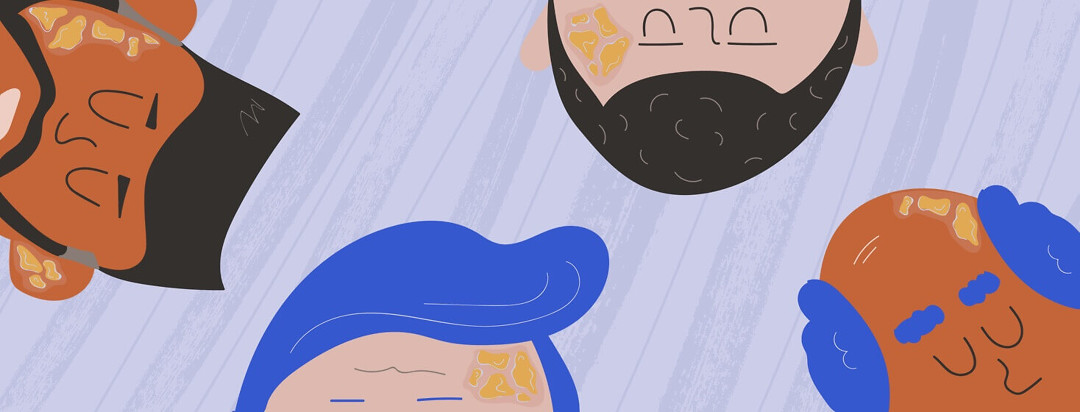What is Sebopsoriasis?
Sebopsoriasis is a skin condition that commonly affects the scalp and face. It is a combination of scalp psoriasis and seborrheic dermatitis. In babies, sebopsoriasis is more commonly known as cradle cap.
What does a diagnosis looks like?
Sebopsoriasis commonly occurs in children, and adults older than age 50, however, it can occur at any age. Sebopsoriasis is also commonly thought to affect more men than women.
Sebopsoriasis often presents as greasy, yellow-gray scales on the scalp and face that are thick and have redness around their borders.1
What's the connection?
Seborrheic dermatitis is a common skin condition that affects only the face, scalp, back and upper chest. An individual with seborrheic dermatitis may have dry, flaking scales, that, unlike psoriasis, are greasy and yellow-gray in color.
The skin around these flakes may be red. A common form of mild seborrheic dermatitis is dandruff. Also unlike psoriasis, seborrheic dermatitis is thought to be related to the growth of yeast on the skin, rather than being autoimmune in nature. A common yeast that is thought to be associated with the development of seborrheic dermatitis is Malassezia yeasts.
Because of this, seborrheic dermatitis is often treated with antifungal agents, like azoles (ketoconazole, itraconazole, or bifonazole), rather than with systemic or biologic therapy. However, both seborrheic dermatitis and scalp psoriasis may be treated with topical corticosteroids in some cases.
Causes of seborrheic dermatitis
Common causes of seborrheic dermatitis include stress, dry weather, and exposure to microorganisms on the skin (including certain yeasts) or skin irritants, among other causes.
Individuals with compromised immune systems, such as individuals with HIV, maybe at a higher risk of developing severe seborrheic dermatitis, since a strong immune system is helpful in fighting off the growth and development of certain yeasts outside or inside the body.1-3
How to diagnose sebopsoriasis
Diagnosing sebopsoriasis can be tricky, as it often presents similarly to other conditions, and there is no diagnostic test to identify it at this time. Your healthcare provider will perform a physical exam and take a thorough history of your symptoms to determine if you have sebopsoriasis or another similarly presenting condition.
In some cases, a small sample of skin, called a skin biopsy, may be taken. When a skin biopsy is taken, a specialized provider, called a pathologist, will look at your skin cells under a microscope to help further understand where your symptoms are coming from and how your skin cells are behaving.
Your doctor may also test any skin cells collected to see if there are any abnormal microorganisms, like certain kinds of yeast or bacteria, on your skin that may be contributing to your symptoms.
Challenges of the condition
As mentioned, sebopsoriasis can look like other common skin conditions, making its diagnosis challenging at times. Some of these other similar conditions include either of its two components on their own (scalp psoriasis and seborrheic dermatitis), as well as atopic dermatitis, contact dermatitis, rosacea, and deficiencies in certain vitamins or minerals, like vitamin B or zinc.
Your healthcare provider will need to consider all of these conditions when diagnosing sebopsoriasis, and rule out each one individually in order to determine the underlying cause of your symptoms.
Diagnosis & treatment options
They will use your physical exam results and symptom history, along with results from your skin biopsy (if you had one) and any other lab tests to determine what’s going on in your specific situation.
If your provider thinks that your symptoms are from a combination of seborrheic dermatitis and psoriasis, they will make a diagnosis of sebopsoriasis. Once they have reached this diagnosis, they will start you on treatment, which may be a combination of common seborrheic dermatitis and psoriasis treatments.1-3

Join the conversation